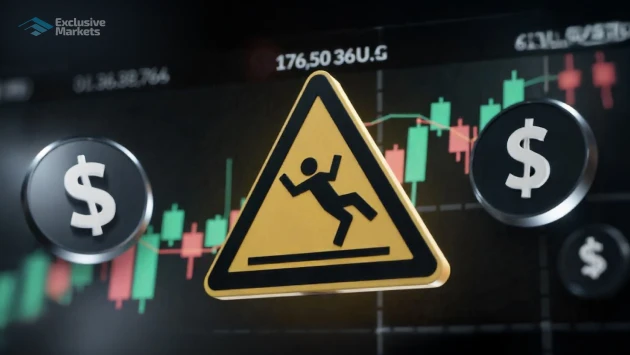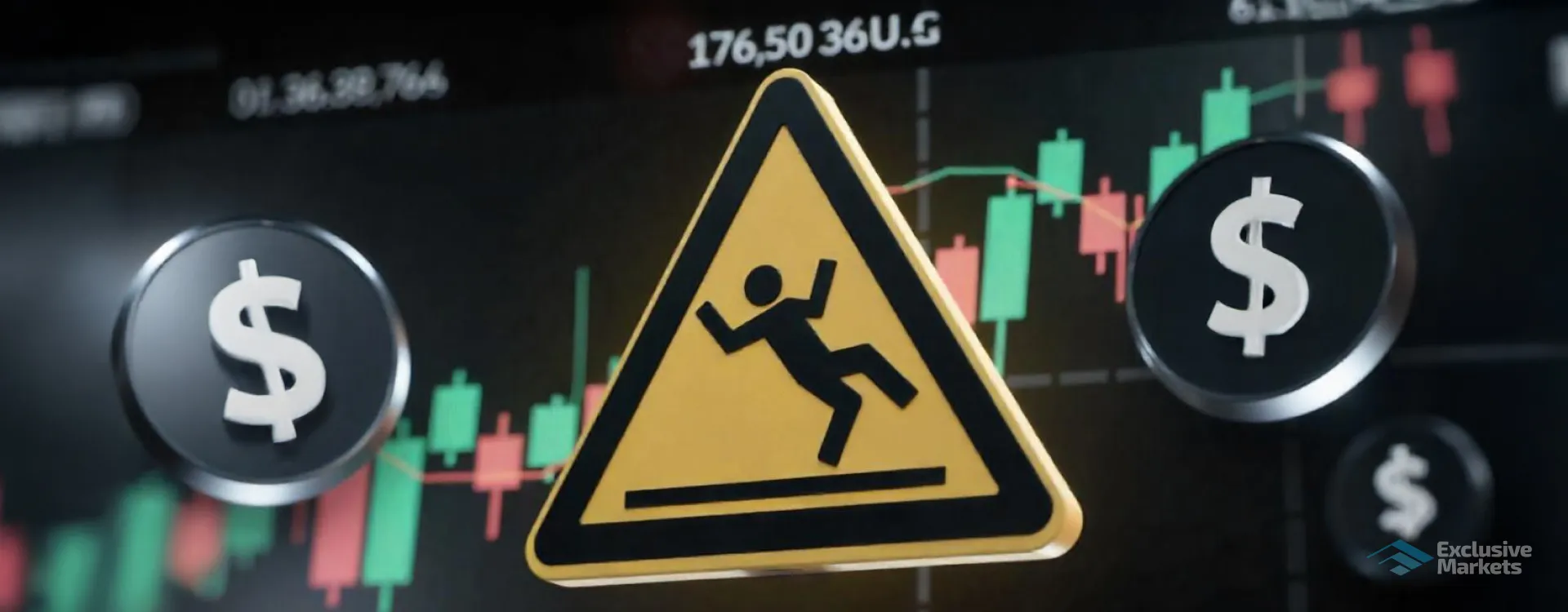
Table of Content
Slippage often happens in markets such as forex, the stock market, or cryptocurrency. It is an essential factor to consider for risk management and strategy optimisation. This article will focus on key areas to familiarise readers with slippage in trading.
Understanding Slippage in Trading
Slippage occurs when a trade is executed at a price different from the requested price. This can happen in markets like stocks, forex, commodities, and even crypto. It is more common during periods of high volatility or in markets with low liquidity.
There are two types of slippages:
- Positive Slippage: This happens when a trade is executed at a more favourable price than expected.
- Negative Slippage: This happens when a trade is executed at a worse price than expected, meaning a higher price for buy orders or a lower price for sell orders.
Slippage generally occurs in situations such as:
- High Market Volatility: Major economic events, news releases, or significant announcements can cause rapid price movements, increasing the likelihood of slippage. Events such as central bank interest rate decisions, employment data, and geopolitical developments can create extreme volatility, making it difficult for orders to be filled at the desired price.
- Low Liquidity: When there are fewer buyers and sellers, orders may not be filled at the requested price and instead get executed at the next available price, leading to slippage. Liquidity is often lower during off-peak trading hours or in exotic currency pairs where trading volume is limited.
Factors Contributing to Slippage
Several factors contribute to slippage while trading in live markets:
- Market Volatility: Rapid price fluctuations during high volatility can increase the likelihood of slippage. Major announcements, geopolitical events, or unexpected news can cause drastic price changes. The more unpredictable the market movement, the higher the risk of slippage.
- Liquidity: Lower liquidity means fewer market participants, leading to wider bid-ask spreads and higher slippage risk. Liquidity tends to decrease during off-hours or on less active trading platforms, making execution at desired prices harder. Some currency pairs, like EUR/USD, have high liquidity, while others, like USD/TRY, may have lower liquidity, leading to more frequent slippage.
- Order Type: Certain order types are more prone to slippage than others. Market orders, which execute at the best available price, are more prone to slippage compared to limit orders, which specify a price limit. Using stop-loss orders during volatile conditions may also lead to slippage as the order executes at the next available price after the stop is triggered.
- Trading Hours: Slippage is more common during off-peak hours when trading activity is lower. For example, forex slippage can happen when trading sessions overlap, leading to sudden price changes. The highest liquidity in forex is during the London and New York session overlap, while slippage is more likely during the Asian session.
- Brokerage Performance: Brokers with slower execution speeds or limited liquidity access may contribute to slippage. Choosing a broker with fast execution and deep liquidity access can help reduce slippage. Some brokers offer ECN (Electronic Communication Network) execution, which may reduce slippage compared to market maker models.
Strategies to Reduce Slippage
Although slippage cannot be entirely avoided, traders can take the following steps to minimise slippage in trading:
- Limit Orders: Limit orders execute only at a specified price or better, reducing the chances of negative slippage. By setting limit orders, traders ensure they only buy or sell at their desired price, but they risk the order not being executed if the price does not reach the limit level.
- Trading in Peak Hours: Trading during high-liquidity periods, such as major market session overlaps, can reduce slippage risk. The London-New York session overlap is often the best time to trade forex due to high liquidity and lower bid-ask spreads.
- Economic Calendars: Traders can monitor economic calendars to avoid entering trades during high-impact news releases, reducing the risk of volatile price swings. Economic releases like Non-Farm Payrolls (NFP) or interest rate decisions often lead to unpredictable price movements, increasing the likelihood of slippage.
- Stop-Limit Orders: Stop-limit orders combine stop and limit order functions, helping control execution prices during volatile conditions. Instead of executing a market order once a stop price is triggered, a stop-limit order only executes at the trader's specified limit price, reducing slippage risk.
- Reliable Broker: A trader should consider choosing a broker with strong execution performance and deep liquidity access. Brokers with direct market access (DMA) and ECN models tend to have lower slippage compared to dealing desk brokers.
- Small Order Sizes: Dividing large orders into smaller portions can minimize slippage, particularly in low-liquidity markets. Instead of executing a large position at once, traders can scale into positions gradually to avoid pushing prices against them.
- Slippage Tolerance Settings: Some trading platforms offer slippage tolerance settings, allowing traders to control acceptable levels of slippage on their trades. These settings enable traders to set a maximum allowable price deviation for order execution.
- Automated Trading Systems: Algorithmic trading systems can execute orders faster than manual trading, helping reduce slippage risk. Automated systems react instantly to market conditions, improving the likelihood of precise order execution.
Impact of Slippage on Trading Strategies
Various forex trading strategies can be adversely influenced by slippage; these include:
- Scalping: Scalping involves making numerous small trades to profit from minor price changes. Slippage can eat away the small profit margins inherent in scalping strategies, so scalpers should do all they can to avoid slippage. A few pips of slippage can turn a profitable strategy into a losing one for high-frequency scalpers.
- Day Trading: It involves traders who depend on brief price movements for their profits. Nonetheless, high levels of slippage disrupt entry and exit points, which affects overall profits. In addition, if a trader cannot enter or exit a position at his or her expected price, the entire essence of the trading plan might need a critical review of the overall plan itself.
- Swing Trading: Swing traders tend to hold their positions for several days and exploit price shifts that may occur. Although they have more leeway with execution than scalpers or day traders, slippage during a key market shift might still act against their profit potential.
- Long-term Investing: Influenced by the buy-and-hold strategy, it is said that long-term investors tend to escape the vigorous effects of slippage. Significant slippage on major market corrections or rallies may change the whole path of the entry price, which might cause big losses on sideways markets.
- Algorithmic Trading: Some trading algorithms are liable to slippage whenever they employ a misplaced set of requirements, especially in fast-moving markets. A trader purely set up with an automated system must account for slippage and rely on back-testing strategies regarding the prospects of execution problems as solutions to accurate performance assessment.
Conclusion
In the fast-paced world of trading, slippage in trading is inevitable but manageable. Understanding its causes and impact is crucial for traders looking to improve execution efficiency. While traders cannot eliminate slippage entirely, they can implement strategies to minimise its impact. By choosing the right broker, optimising order types, and trading at high-liquidity periods, traders can significantly reduce slippage risks. With the right approach, traders can mitigate slippage and improve their overall trading performance.
Are you Ready to Explore the World of Trading?
Disclaimer: The information provided on this blog is for educational/informational purposes only and should not be considered financial/investment advice. Trading carries a high level of risk, and you should only trade with capital you can afford to lose. Past performance is not indicative of future results. We do not guarantee the accuracy or completeness of the information presented, and we disclaim all liability for any losses incurred from reliance on this content.

 3113
3113 07-08-2025
07-08-2025